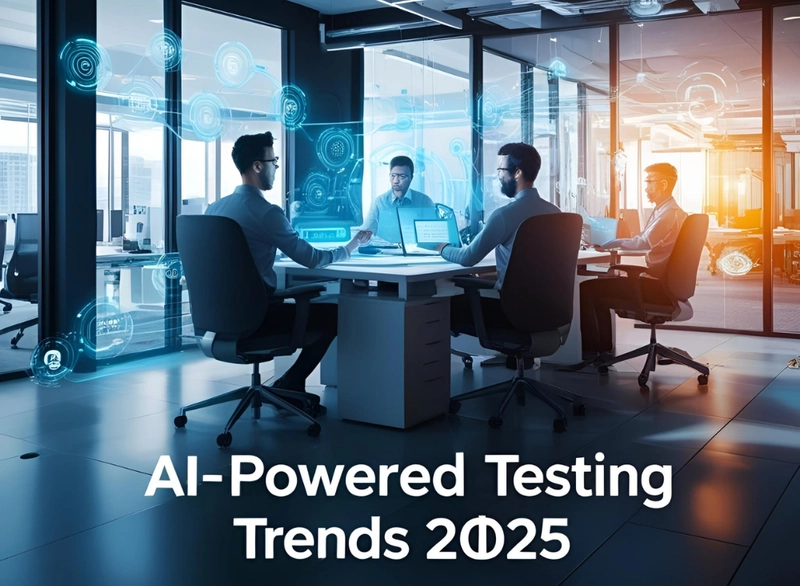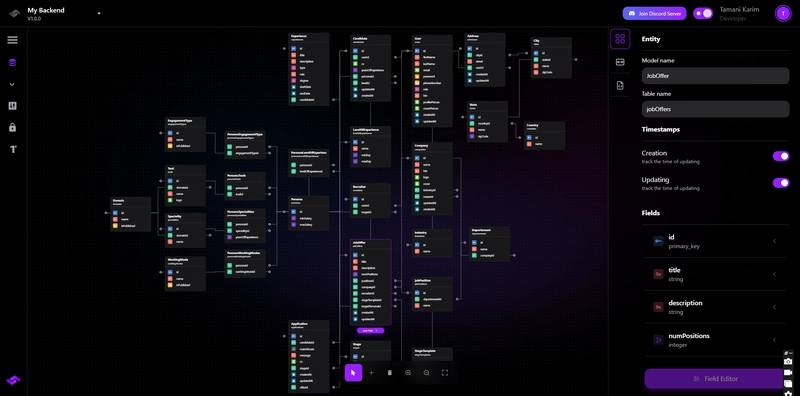AI-Powered Testing Trends in 2025: Automated, Smart, and Efficient
In 2025, AI-powered testing continues to revolutionize the software development lifecycle, enhancing efficiency, accuracy, and scalability. As organizations strive for rapid and reliable releases, AI-driven testing methodologies are becoming indispensable. Below are the key trends shaping the future of AI-powered testing in 2025. 1.Hyper-Automation in Testing AI-driven hyper-automation is reducing manual intervention in testing processes. With advancements in machine learning (ML) and natural language processing (NLP), automated test generation, execution, and analysis are becoming more intelligent and self-sufficient. AI-powered tools can now detect application changes and autonomously update test cases, ensuring minimal human oversight. 2.Self-Healing Test Automation Traditional automated tests often break when applications undergo UI or functional changes. In 2025, AI-based self-healing automation tools identify such changes and adapt test scripts dynamically. These tools reduce test maintenance efforts, ensuring higher test stability and reliability. 3.AI-Driven Test Case Generation Generative AI and ML algorithms are being leveraged to create optimal test cases based on historical data, code changes, and risk analysis. This trend enhances test coverage while minimizing redundant test cases, leading to faster and more effective testing cycles. 4.Autonomous Test Execution and Analysis AI-powered bots can execute tests independently, analyze failures, and suggest fixes in real-time. By leveraging intelligent analytics and predictive modeling, these bots prioritize critical test cases, optimize test execution, and reduce downtime in software development. 5.Shift-Left and Shift-Right Testing with AI Organizations are adopting AI to shift testing left (early-stage testing) and right (post-production monitoring). AI-driven code analysis tools detect vulnerabilities and performance bottlenecks earlier in the development cycle, while AI-powered observability tools monitor user interactions in production, ensuring continuous quality improvement. 6.AI in Performance and Load Testing AI enhances performance testing by predicting system behavior under different loads using past data. Intelligent algorithms simulate real-world traffic patterns, identify performance bottlenecks, and suggest optimizations, ensuring seamless user experiences. 7.AI-Powered Security Testing With cybersecurity threats evolving, AI-driven security testing tools detect vulnerabilities, predict potential attack vectors, and recommend remediation strategies. These tools automate security assessments and ensure compliance with industry standards, reducing security risks. 8.Intelligent Test Data Management AI streamlines test data generation, masking, and validation, ensuring high-quality, compliant test data. By analyzing application behavior, AI-based data management solutions generate realistic test data, improving test effectiveness while maintaining privacy and compliance. 9.Codeless Test Automation Codeless AI-powered automation platforms are enabling non-technical testers to create, manage, and execute test cases using intuitive, visual interfaces. This democratization of test automation accelerates software development and reduces dependency on specialized testing teams. 10.AI-Augmented DevOps and Continuous Testing AI is deeply integrated into DevOps pipelines, enabling seamless continuous testing. AI-driven monitoring, predictive analytics, and automated bug triaging enhance the efficiency of DevOps teams, reducing software delivery times while maintaining quality standards. Conclusion AI-powered testing is transforming the software testing landscape, making it more automated, intelligent, and efficient. As AI continues to evolve, testing processes will become increasingly adaptive, proactive, and resilient, ensuring high-quality software with minimal manual intervention. Organizations that embrace these trends will gain a competitive edge in the fast-paced digital ecosystem of 2025.

In 2025, AI-powered testing continues to revolutionize the software development lifecycle, enhancing efficiency, accuracy, and scalability. As organizations strive for rapid and reliable releases, AI-driven testing methodologies are becoming indispensable. Below are the key trends shaping the future of AI-powered testing in 2025.
1.Hyper-Automation in Testing
AI-driven hyper-automation is reducing manual intervention in testing processes. With advancements in machine learning (ML) and natural language processing (NLP), automated test generation, execution, and analysis are becoming more intelligent and self-sufficient. AI-powered tools can now detect application changes and autonomously update test cases, ensuring minimal human oversight.
2.Self-Healing Test Automation
Traditional automated tests often break when applications undergo UI or functional changes. In 2025, AI-based self-healing automation tools identify such changes and adapt test scripts dynamically. These tools reduce test maintenance efforts, ensuring higher test stability and reliability.
3.AI-Driven Test Case Generation
Generative AI and ML algorithms are being leveraged to create optimal test cases based on historical data, code changes, and risk analysis. This trend enhances test coverage while minimizing redundant test cases, leading to faster and more effective testing cycles.
4.Autonomous Test Execution and Analysis
AI-powered bots can execute tests independently, analyze failures, and suggest fixes in real-time. By leveraging intelligent analytics and predictive modeling, these bots prioritize critical test cases, optimize test execution, and reduce downtime in software development.
5.Shift-Left and Shift-Right Testing with AI
Organizations are adopting AI to shift testing left (early-stage testing) and right (post-production monitoring). AI-driven code analysis tools detect vulnerabilities and performance bottlenecks earlier in the development cycle, while AI-powered observability tools monitor user interactions in production, ensuring continuous quality improvement.
6.AI in Performance and Load Testing
AI enhances performance testing by predicting system behavior under different loads using past data. Intelligent algorithms simulate real-world traffic patterns, identify performance bottlenecks, and suggest optimizations, ensuring seamless user experiences.
7.AI-Powered Security Testing
With cybersecurity threats evolving, AI-driven security testing tools detect vulnerabilities, predict potential attack vectors, and recommend remediation strategies. These tools automate security assessments and ensure compliance with industry standards, reducing security risks.
8.Intelligent Test Data Management
AI streamlines test data generation, masking, and validation, ensuring high-quality, compliant test data. By analyzing application behavior, AI-based data management solutions generate realistic test data, improving test effectiveness while maintaining privacy and compliance.
9.Codeless Test Automation
Codeless AI-powered automation platforms are enabling non-technical testers to create, manage, and execute test cases using intuitive, visual interfaces. This democratization of test automation accelerates software development and reduces dependency on specialized testing teams.
10.AI-Augmented DevOps and Continuous Testing
AI is deeply integrated into DevOps pipelines, enabling seamless continuous testing. AI-driven monitoring, predictive analytics, and automated bug triaging enhance the efficiency of DevOps teams, reducing software delivery times while maintaining quality standards.
Conclusion
AI-powered testing is transforming the software testing landscape, making it more automated, intelligent, and efficient. As AI continues to evolve, testing processes will become increasingly adaptive, proactive, and resilient, ensuring high-quality software with minimal manual intervention. Organizations that embrace these trends will gain a competitive edge in the fast-paced digital ecosystem of 2025.












































































































































































![[The AI Show Episode 142]: ChatGPT’s New Image Generator, Studio Ghibli Craze and Backlash, Gemini 2.5, OpenAI Academy, 4o Updates, Vibe Marketing & xAI Acquires X](https://www.marketingaiinstitute.com/hubfs/ep%20142%20cover.png)


























































































































![[FREE EBOOKS] The Kubernetes Bible, The Ultimate Linux Shell Scripting Guide & Four More Best Selling Titles](https://www.javacodegeeks.com/wp-content/uploads/2012/12/jcg-logo.jpg)



![From drop-out to software architect with Jason Lengstorf [Podcast #167]](https://cdn.hashnode.com/res/hashnode/image/upload/v1743796461357/f3d19cd7-e6f5-4d7c-8bfc-eb974bc8da68.png?#)







































































































.png?#)





.jpg?#)






























_Christophe_Coat_Alamy.jpg?#)







































































































![Rapidus in Talks With Apple as It Accelerates Toward 2nm Chip Production [Report]](https://www.iclarified.com/images/news/96937/96937/96937-640.jpg)









































































































































